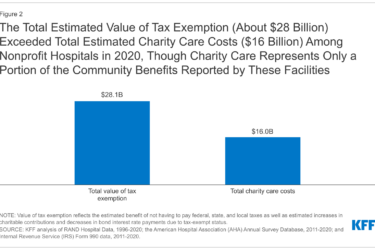 The basic calculation uninsured people had to make this first open enrollment season in the ACA is whether to get covered – or take the risks of going without health insurance and pay a penalty (unless they are exempt.)
The basic calculation uninsured people had to make this first open enrollment season in the ACA is whether to get covered – or take the risks of going without health insurance and pay a penalty (unless they are exempt.)
After all, some of them probably figure, they have managed to get discounted or charity care in the past. Why should that change?
It might.
Some hospitals are pondering changes in their policies about how to treat the uninsured, according to an interesting article by Melanie Evans that appears in Modern Healthcare.
The changes they are thinking about won’t affect emergency care; under the Emergency Medical Treatment & Labor Act (EMTALA) hospitals have to stabilize someone coming in with an emergency. But it does affect what they may charge people for care, and how and when they provide non-urgent care.
Medicaid enrollment continues – there is no open season, and someone can walk into a hospital sick and sign up for Medicaid right there, assuming their income qualifies them.
But what about people who could have signed up for a policy in the ACA marketplaces and gotten a tax-credit/subsidy and chose not to. What can or should hospitals do about them?
“It becomes unfair to … saddle the hospital if you have the opportunity to have insurance and don’t take that and essentially disadvantage us by passing that cost to us,” the article quotes Jeffrey Sanford, the vice president and controller of Brewer-based Eastern Maine Healthcare Systems as saying.
Evans writes that UnityPoint Health-Trinity, which has four hospitals in Iowa and Illinois, is considering several options for those who chose to remain uninsured.
One option under consideration is some kind of “fine” for these patients. They could get charity care – but it wouldn’t be quite so charitable. “Trinity leaders fear that without some kind of penalty, patients may see its financial aid as a better deal than having to pay premiums, deductibles and coinsurance under a private plan offered on the exchange,”
Other hospitals, Evans reports, are considering offering less financial aid and postponing elective surgery for patients who don’t get covered when they had the opportunity. They may require the uninsured to get coverage before medical debt is waived. (In states that didn’t expand Medicaid, millions of people didn’t have new coverage options.)
At the same time, some hospitals will change their financial aid to help low-income patients who did get covered but are stilling facing some economic challenges. They may give less charity to people who chose not to get covered – but direct those funds instead to low-income people who did get covered and are having trouble meeting the cost-sharing – deductibles,co-pays etc.
“It used to be that the provider assumed they did not have to worry about charity if you had insurance,” Steve Levin, CEO of Connance, a Waltham, Mass.-based revenue-cycle company was quoted as saying. “That’s not the case anymore. They have insurance and high deductibles and they in fact live in poverty.” (Actually, the exchange population is over the poverty level and there are extra cost-sharing subsidies for people up to 250 percent of poverty – but there are still low-income groups in the exchange who will have daunting out of pocket costs.)
Hospitals will be facing a different economic environment with more covered patients – but also some financial pressure from Medicare cuts and other public sector payment changes. Peter Cunningham, professor of health care policy and research at Virginia Commonwealth University, told Evans, “I don’t think there’s anything that would stop hospitals from saying, ‘We determined you’re eligible for subsidies and you didn’t enroll and therefore you’re not eligible for charity.’”
How states or Medicare may respond to any changes in not-for-profit hospitals’ charity-care policies isn’t clear. To have nonprofit tax status, they do have to provide a certain level of community service/charity care. But that doesn’t mean they have to provide it the way they did before the law was passed.
The for-profit hospitals don’t have the same legal obligations to provide charity care but many do have assorted policies about charity, discounts etc. Those, too, could appear in a 2.0 version post ACA.
Evans has a lot more details of how other specific hospitals are responding and it’s worth a read. She also offers some questions that are a really good starting point to ask hospitals in your community:
- Are they fining patients who didn’t sign up during open enrollment?
- Are they cutting the level of charity care or requiring patients to pay a bigger share of the costs?
- Are they postponing elective procedures?
- Are they giving financial help to cover high cost-sharing under the exchange plans (and are they using this as a marketing tool to draw in newly insured people?)
- Are they revising financial aid in other ways to change incentives, so it’s less preferable to buying coverage?
I would also ask your hospitals how much outreach and marketing and sign-up assistance they offered patients or potential patients during this year’s open enrollment system, and what they are thinking about doing differently next year.









